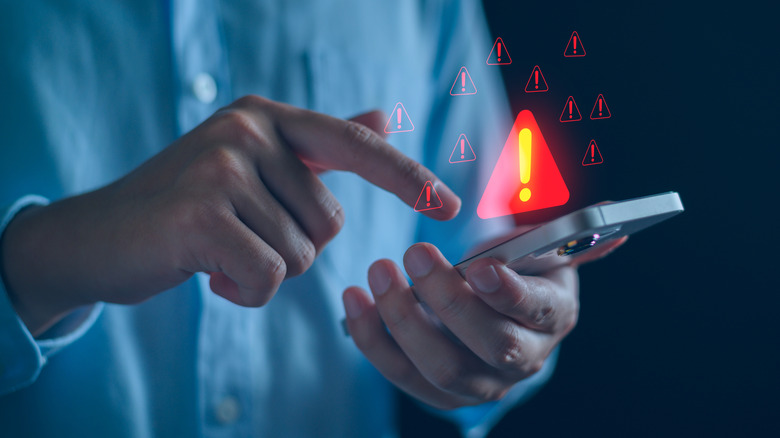How To Find And Remove Spyware From Your Android Phone
If you're not careful, your Android just might be spying on you. Over the past 12 months, more and more hackers have turned to spyware to try and steal user data, snooping on users' messages, photos, phone calls, and even GPS movements.
A study conducted by Malwarebytes found a 147% increase in spyware in the first half of 2025, with one of the worst offenders being SMS-based malware, which spiked by 692% from April to May.
Spyware is extremely popular among cybercriminals as it's very easy to pull off through phishing scams. All the hacker needs to do to cause an infection is to send a message tricking the user into installing malware or clicking through to a phishing website.
Once the malware is installed, the attacker has free access to sensitive data including usernames, passwords, credit card details, and more. The good news is that spyware can be removed by taking a few simple actions.
Tips for finding and removing spyware
If your device has been affected by spyware there are a few telltale giveaways. For example, you might notice the device begin to perform unusually slow, overheat, or consume battery at a rapid pace. Excessive data consumption can also indicate the presence of malware on your device.
One of the best ways to identify a spyware infection is to use a malware detection or removal tool. According to AV Test, some of the top spyware removal tools for Android include Avast Antivirus & Security, Avira Antivirus Security, Bitdefender Mobile Security, and Kaspersky Premium for Android.
These types of tools can help you to scan your Android's apps for malware and provide instructions on how you can remove it. You can also manually remove spyware by rebooting the device in safe mode and deleting the offending apps.
To enter safe mode, hold down your phone's power button, and tap and hold the Power off option until the Safe mode option appears. Next, go to Settings, and select Apps. Select the malicious app(s) and remove them. This can be done by tapping on the chosen app, pressing Uninstall, and then Ok to remove it from your device.
How to remove apps with administrator positions and prevent other attacks
Some malicious apps may have administrator permissions that prevent them from being uninstalled. Fortunately, you can remove these permissions by going to Settings, selecting Security and Privacy, scrolling down to More Security settings, and selecting Device admin apps.
Now you should be able to toggle off permissions for the suspicious app. Once you deactivate permissions you will be able to delete the app. When you're finished, restart your Android device to reset it back to normal.
Of course, prevention is always better than a cure. If you want to stop your device from getting infected in the first place then you're going to need to be extremely careful about the types of apps you download.
Malicious apps do make their way through to the Google Play Store, even if they've been scanned by Play Protect, so it's a good idea to stick to well-reviewed apps. Other security measures, such as installing an anti-malware app and avoiding clicking on links in SMS messages, can reduce the chance of your device being infected in the first place.


